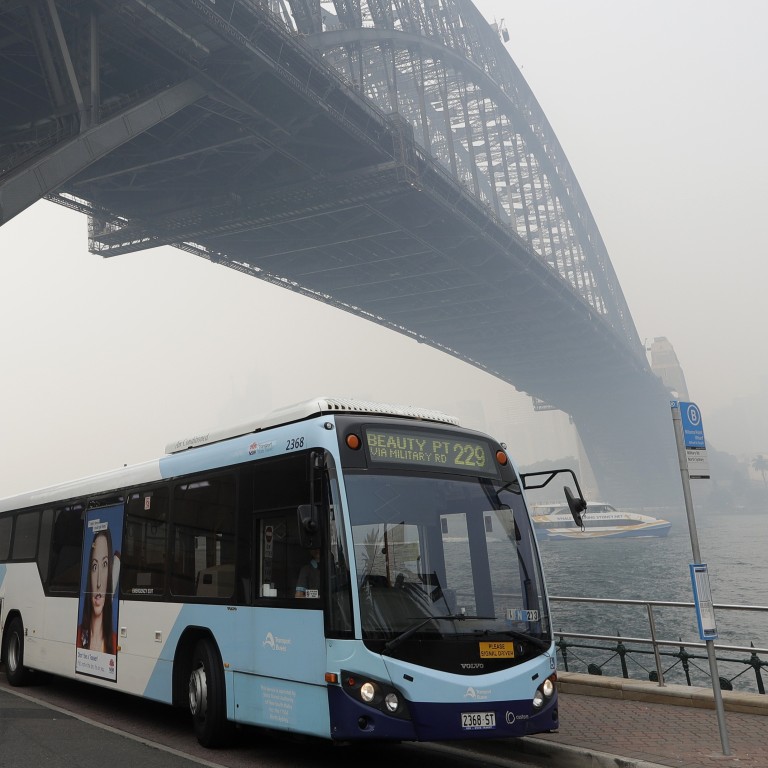
Sydney fires: Harbour Bridge barely visible, smoke alarms go off as haze chokes city
- Ash has been washing up on the city’s beaches and the Air Quality Index has soared past the ‘hazardous’ threshold of 200, with flights delayed due to poor visibility
- Temperatures are forecast to rise to 42 degrees Celsius in some parts of the city, as over 2.7 million hectares of land has been burnt so far this bush fire season
The Sydney Opera House and Harbour Bridge were barely discernible through the thick haze enveloping the city, with smoke stinging the eyes and making it difficult to breathe.
The Air Quality Index compiled by the state environment department reached as high as 2,552 in some eastern suburbs – soaring past the “hazardous” threshold of 200. The pollution has been so bad it has set off smoke alarms in office buildings across the CBD, while ash has been washing up on the city’s usually pristine beaches. Flight arrivals at Sydney Airport were delayed by up to 30 minutes due to poor visibility.
Australia fires merge into one massive blaze, threatening Sydney
The number of people seeking treatment at Sydney hospitals increased by about 25 per cent, local media reported, citing Richard Broome, New South Wales state’s director of environmental heath, as saying. “It is some of the worst air quality we’ve seen,” he said.
Authorities warned people with respiratory conditions, or heart and lung problems, to stay indoors. Office workers were seen wearing face masks in the street, an unusual sight in a city more used to clear blue skies and clean air.

The ferocious and early start to the fires this year has stoked a debate around whether Australia’s government – a champion of the coal industry – is doing enough to curb greenhouse gas emissions.
Australia’s bush fires could take ‘many weeks’ to extinguish if there’s no rain
Prime Minister Scott Morrison has repeatedly shut down claims that his government’s approach to climate change has contributed in any material way to the current bush fire emergency.
The devastating fire conditions were referenced several times at an energy summit in Sydney on Tuesday, where Matt Kean, the NSW state minister for the environment, said a transition to clean energy was inevitable.
“Let’s call it for what it is: these bush fires have been caused by extreme weather events, high temperatures, the worst drought in living memory – the exact type of events scientists have been warning us about for decades that would have been caused by climate change,” Kean said.
The wildfires have generated more hotspots in the past two days than any other country and the intensity of the blazes is greater than the rest of the world combined, according to Nasa satellite data.
National Aeronautics and Space Administration satellites detected 5,748 hotspots in Australia over the past 48 hours, more than the total number found in Brazil, Indonesia and India.

